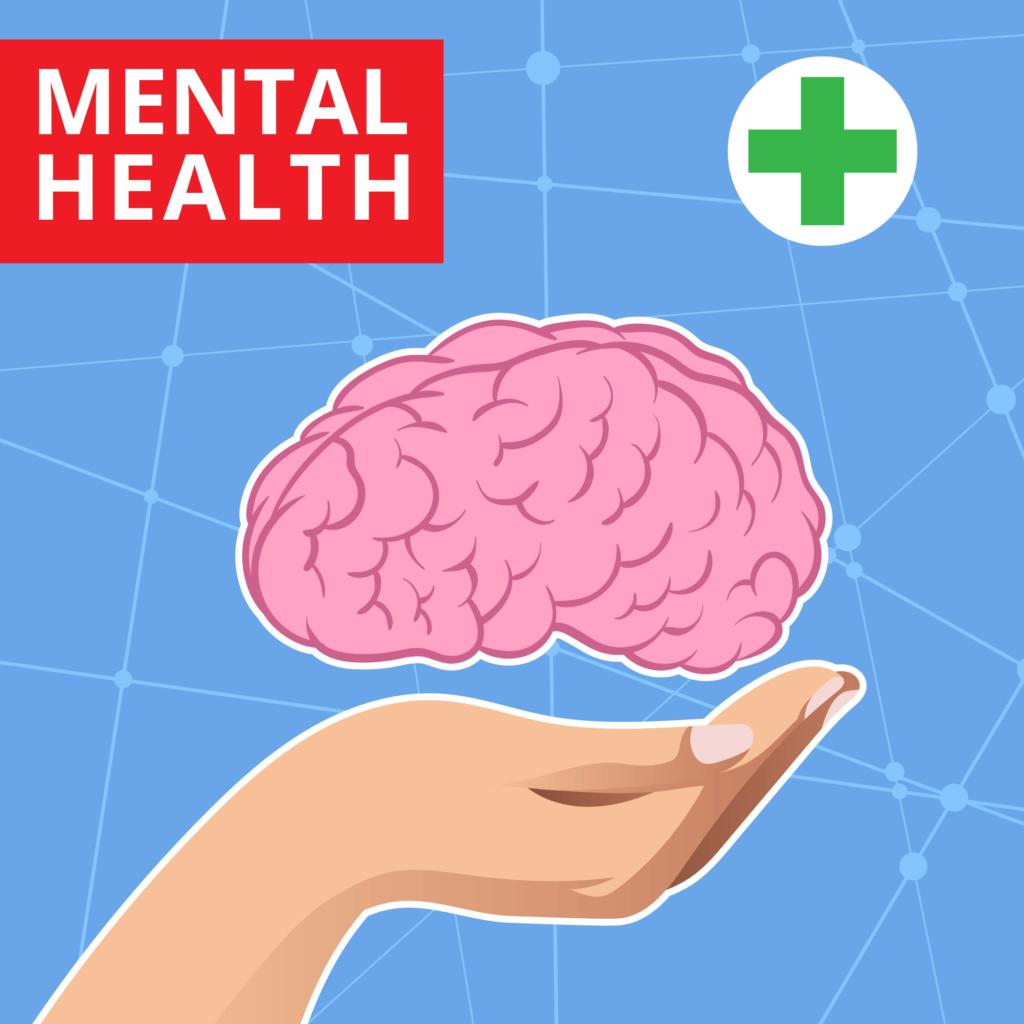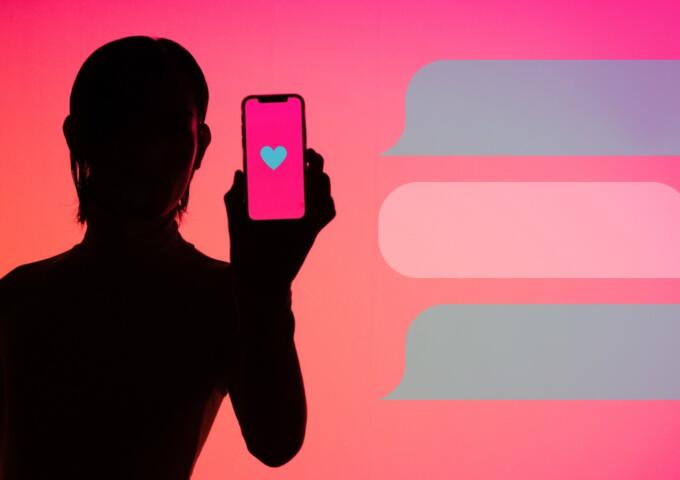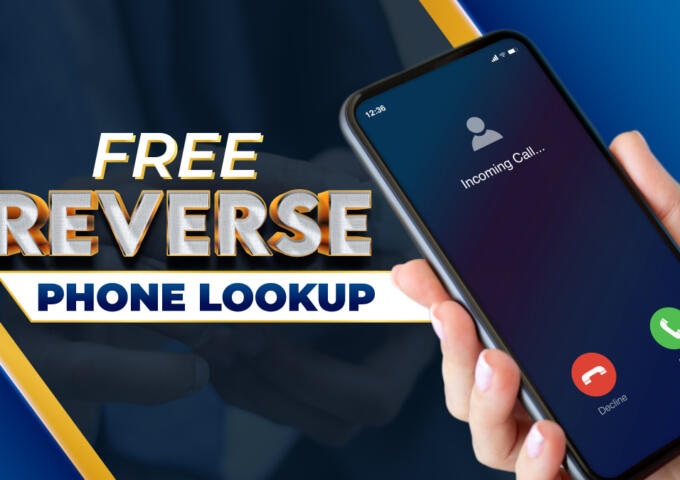When Dana Marino felt her mental health was in crisis, she pulled her car off Lancaster Avenue and into the nearest gas station.
It was a Monday morning, and on her way to her job in Ardmore, distressing thoughts became too much to handle alone – it was time to meet with a therapist.
Marino, a West Chester native, had been to counseling in the past. She knew finding the right therapist with immediate availability for new patients took time and a bit of luck. So instead, she went to the app store on her iPhone and downloaded BetterHelp. The fully-online mental health service promises to connect users with a trained therapist within a day – in Marino’s case, it only took one hour.
Post-COVID, the therapist’s armchair may be a thing of the past. Marino is just one of 1.3 million users BetterHelp claims to help, and a Google search for “online therapy” yields countless look-alikes – Talkspace is a major competitor. But for a young generation of Americans who struggle with mental illness in record numbers, can a digital start-up replace the nuance and personal connection that traditional, in-person therapy offers?
Nine months into the pandemic, telehealth has taken over as a safe alternative to medical visits. Mental health treatment is no exception, and a dive through Psychiatry Today’s database shows a majority of therapists have made the switch to offering video and phone sessions with clients. But what individual practitioners haven’t accounted for was the rapid rise of fully online companies like BetterHelp, which claim to offer a quicker alternative.
“Something so small as me handing a box of tissues or leaning in so they can see I’m attune to what they’re saying, that can be a very powerful way to communicate.”
Kathryn Esquer
Clinical psychologist Kathryn Esquer, Psy.D, has seen firsthand the demand for therapy skyrocket over the past year. She holds degrees from Saint Joseph’s University as well as Widener University, and currently practices in Selinsgrove, PA. Prior to the onset of the pandemic, Esquer was already seeing an uptick in patients seeking mental health treatment. Since March, she’s witnessed cases of depression and anxiety in both new and old patients rise to unprecedented levels.
“Most people who suffer from anxiety can function pretty well on their own. But with the pandemic and the increase in health threats, worrying about family members, additional stress from online learning, and to then take away their coping skills, friends and family – obviously that’s a breeding ground for exacerbated symptoms,” she told Philadelphia Weekly over the phone.
Studies from the Centers for Disease Control reflect what Esquer and other mental health professionals have observed. The latest statistics show that 40 percent of U.S. adults are currently struggling with mental health issues or substance abuse, and 11 percent have considered suicide at some point this year.
Things never got that bad for Marino, but as the months went on, her relationship with BetterHelp’s therapist began to feel more distant. Most of their communication played out over text messages, and she began struggling to maintain a connection with someone she barely saw or heard. Slowly, the downsides of online therapy were becoming more apparent than their initial benefits.

“It’s that personal connection that makes you feel different when you get to therapy versus when you’re leaving. That wasn’t something I was getting over my phone,” said Marino.
From her experience in the mental health field, Esquer agrees that something is often missing when clients and therapists can’t be in the same room together.
“You lose a lot of that body language and non-verbal communication. And not only is that lost from the client to the therapist, but the therapist to the client,” she says.
“Something so small as me handing a box of tissues or leaning in so they can see I’m attuned to what they’re saying, that can be a very powerful way to communicate. That’s lost with text-based therapy.”
Esquer mentions that user-experience will vary depending on their communication style.
“Text message-based therapy could be an effective method for some, but it could also be harmful for others,” she says.
“It’s important to have a clinician who can distinguish between whether that constant and disjointed access to a therapist can be helpful.”
“There’s this nagging feeling that I have the option to do better for myself right on my phone, and I should take advantage.”
Tori Wilson
Esquer explains that a patient who struggles with rejection or boundary issues may have more problems with text-based therapy, as they’re often sensitive to how messages are perceived – and how long it takes to get a reply. While BetterHelp and Talkspace advertise round-the-clock service, it’s not guaranteed that your assigned therapist will respond immediately.
Still, Esquer also thinks that the convenience of these apps are a positive appeal to the type of person who wouldn’t normally seek out in-person therapy.
“These services decrease the barrier of entry,” she says.
“Hopefully, they give people a good experience so they can test the waters with seeing a clinician.”
Ideally, Esquer hopes this would lead the client to seek more in-depth support down the line.
Many former BetterHelp and Talkspace clients share a vocal dissatisfaction with the service. On a Reddit thread which asked users to share their experiences with these companies, users were quick to cite a lack of connection between therapist and client.
“If I hadn’t been given the ‘complimentary’ 15-minute video chat with my therapist I would have sworn I was talking to a computer program designed to spit back platitudes at me,” said one Talkspace user.
Another contributor responded, “A good therapist needs to see your body language and hear your tone of voice to read between the lines and know when to encourage you to open up. Don’t use text-only ’therapy’ and expect anything more than someone paid to read your message and respond once a day or twice a day.”
South Philly resident Tori Wilson agrees that therapy via text can feel impersonal. The 28-year-old grad-student lived in Bella Vista until the pandemic forced her to move back to her parents house. Like other people forced into isolation, Wilson was initially attracted to BetterHelp for its pocket-ready convenience.
“I’m not sure if I’ve connected with a therapist that has been the right fit for me,” Wilson told PW. She’s only been using BetterHelp for three weeks, but has already requested another therapist.
Unlike some users, Wilson is giving her next therapist on BetterHelp a second chance.
“I think the benefit is the ability to switch providers very easily so you don’t feel forced to stick with someone you don’t connect with. Although I could see how fans of traditional therapy might also say that’s it’s downfall.”
“Something so small as me handing a box of tissues or leaning in so they can see I’m attune to what they’re saying, that can be a very powerful way to communicate.”
Kathryn Esquer
She added, “There’s this nagging feeling that I have the option to do better for myself right on my phone, and I should take advantage. Nobody wants to be the person to quit therapy without seeing any real changes.”
Whether online therapy works for some and fails for others, there’s the undeniable appeal of low-cost treatment options during a brutal financial crisis. Without insurance, the average cost of traditional therapy in the U.S. is between $60 and $250 per session, and it’s not uncommon to see therapists charge more than $100 an hour. And that’s assuming you can even get coverage – a NAMI study found many insurers do not cover mental health at all. Talkspace advertises plans between $59 and $99 per week. The $99 package offers four 30-minute video sessions per month along with unlimited text messaging, while the $59 package offers only the latter.
For those seeking a low-cost alternative to therapy apps, one Philadelphia-based nonprofit has presented a treatment model that’s gaining national attention.
The LiveWell Foundation was formed just three years ago by Stefanie Glick, a certified peer specialist and behavioral health professional with more than 25 years of experience in the field. As founding executive director, Glick’s mission is to offer people with depression and its concurrent issues like anxiety and substance abuse with equal access to treatment through peer-support and skill-based education. LiveWell’s clients benefit from psychosocial support, meaning they’ll meet in groups of 30 to 35, usually once a week for an hour and 15 minutes. LiveWell’s curriculum brings together multiple aspects of treatment for depression, which are taught by existing members to new ones.
Since the pandemic hit, things have never been better for LiveWell.
“We’ve had more people sign on to our support groups online in the last eight months than all of last year,” says Glick.
This year alone, LiveWell has seen 1,800 session log-ins, and not just from the City of Brotherly Love. Some new clients hail from India, South America, and the United Kingdom. Glick says LiveWell does not advertise, but instead relies on word of mouth and web searches. She also notes that 25 to 30 percent of clients are referred by their own primary care physician or psychiatrist.
Some LiveWell members seek individual psychotherapy on the side, but for many, LiveWell is their primary treatment option. A 2015 study from the American Journal of Community Psychology found that peer-assisted interventions were as effective as traditional psychotherapy, and educational and skills-based groups performed best of all peer-based models.
“The thing with depression is, you lose motivation,” explains Glick.
“Here, you have a network of peers that, first of all, understand how hard it is to keep the motivation for self care up, and the ongoing support we believe is needed on a daily basis.”
LiveWell offers a confidential contact list, which allows members to chat with one another between sessions for additional connection.
Recently, LiveWell groups have quickly become overcrowded. To accommodate new members, Glick’s had to train a new class of facilitators to lead sessions. The organization is run entirely by volunteers, who come from a variety of backgrounds – LiveWell’s website proudly showcases portraits of this diverse team. One facilitator, Daniel, is professor of humanities at a local university. Another, Renee, is a practicing physician. Zain is a poet and musician. Sweeny is a social worker. The list of smiling 20 and 30-somethings goes on and on.
It can’t be overlooked that LiveWell is entirely free, a factor that can be make or break for those seeking relief. A banner on their website highlights a statistic that 70 percent of people cannot access or afford the depression support they require. It’s an unsurprising reality, as entire articles have been written about what to do if you can’t afford mental health services – some suggestions offered by Psych Central include “read self help books” and “re-evaluate expenses.”
Easy solutions like those are not always the right ones for people like Marino and Wilson, which is why many facing mental health crises will continue to ditch the therapist’s armchair for a variety of new options.





